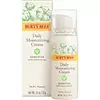What's inside
What's inside
 Key Ingredients
Key Ingredients

 Benefits
Benefits

 Concerns
Concerns

 Ingredients Side-by-side
Ingredients Side-by-side

Water
Skin ConditioningHelianthus Annuus Seed Oil
EmollientGlycerin
HumectantCetyl Alcohol
EmollientCI 77947
Zea Mays Starch
AbsorbentGossypium Herbaceum Flower Extract
HumectantBeta Vulgaris Root Extract
Skin ConditioningArtemisia Umbelliformis Extract
Skin ConditioningEuphrasia Officinalis Extract
AntimicrobialButyrospermum Parkii Butter
Skin ConditioningSaccharum Officinarum Juice Extract
Skin ConditioningJojoba Esters
EmollientHydrolyzed Jojoba Esters
Skin ConditioningKaolin
AbrasiveLecithin
EmollientSucrose
HumectantFructose
HumectantGlucose
HumectantInositol
HumectantCitric Acid
BufferingBenzoic Acid
MaskingTrehalose
HumectantGlyceryl Laurate
EmollientPotassium Sorbate
PreservativeSucrose Stearate
EmollientSucrose Polystearate
EmollientSodium Benzoate
MaskingSodium Stearoyl Lactylate
EmulsifyingSodium PCA
HumectantAlcohol Denat.
AntimicrobialPhenoxyethanol
PreservativeWater, Helianthus Annuus Seed Oil, Glycerin, Cetyl Alcohol, CI 77947, Zea Mays Starch, Gossypium Herbaceum Flower Extract, Beta Vulgaris Root Extract, Artemisia Umbelliformis Extract, Euphrasia Officinalis Extract, Butyrospermum Parkii Butter, Saccharum Officinarum Juice Extract, Jojoba Esters, Hydrolyzed Jojoba Esters, Kaolin, Lecithin, Sucrose, Fructose, Glucose, Inositol, Citric Acid, Benzoic Acid, Trehalose, Glyceryl Laurate, Potassium Sorbate, Sucrose Stearate, Sucrose Polystearate, Sodium Benzoate, Sodium Stearoyl Lactylate, Sodium PCA, Alcohol Denat., Phenoxyethanol
Water
Skin ConditioningGlycerin
HumectantCetearyl Alcohol
EmollientCaprylic/Capric Triglyceride
MaskingCetyl Alcohol
EmollientCeteareth-20
CleansingPetrolatum
EmollientPotassium Phosphate
BufferingCeramide NP
Skin ConditioningCeramide AP
Skin ConditioningCeramide EOP
Skin ConditioningCarbomer
Emulsion StabilisingDimethicone
EmollientBehentrimonium Methosulfate
Sodium Lauroyl Lactylate
EmulsifyingSodium Hyaluronate
HumectantCholesterol
EmollientPhenoxyethanol
PreservativeDisodium EDTA
Dipotassium Phosphate
BufferingTocopherol
AntioxidantPhytosphingosine
Skin ConditioningXanthan Gum
EmulsifyingEthylhexylglycerin
Skin ConditioningWater, Glycerin, Cetearyl Alcohol, Caprylic/Capric Triglyceride, Cetyl Alcohol, Ceteareth-20, Petrolatum, Potassium Phosphate, Ceramide NP, Ceramide AP, Ceramide EOP, Carbomer, Dimethicone, Behentrimonium Methosulfate, Sodium Lauroyl Lactylate, Sodium Hyaluronate, Cholesterol, Phenoxyethanol, Disodium EDTA, Dipotassium Phosphate, Tocopherol, Phytosphingosine, Xanthan Gum, Ethylhexylglycerin
 Reviews
Reviews

Ingredients Explained
These ingredients are found in both products.
Ingredients higher up in an ingredient list are typically present in a larger amount.
Cetyl Alcohol is a fatty alcohol. Fatty Alcohols are most often used as an emollient or to thicken a product.
Its main roles are:
Though it has "alcohol" in the name, it is not related to denatured alcohol or ethyl alcohol.
The FDA allows products labeled "alcohol-free" to have fatty alcohols.
Learn more about Cetyl AlcoholGlycerin is already naturally found in your skin. It helps moisturize and protect your skin.
A study from 2016 found glycerin to be more effective as a humectant than AHAs and hyaluronic acid.
As a humectant, it helps the skin stay hydrated by pulling moisture to your skin. The low molecular weight of glycerin allows it to pull moisture into the deeper layers of your skin.
Hydrated skin improves your skin barrier; Your skin barrier helps protect against irritants and bacteria.
Glycerin has also been found to have antimicrobial and antiviral properties. Due to these properties, glycerin is often used in wound and burn treatments.
In cosmetics, glycerin is usually derived from plants such as soybean or palm. However, it can also be sourced from animals, such as tallow or animal fat.
This ingredient is organic, colorless, odorless, and non-toxic.
Glycerin is the name for this ingredient in American English. British English uses Glycerol/Glycerine.
Learn more about GlycerinPhenoxyethanol is a preservative that has germicide, antimicrobial, and aromatic properties. Studies show that phenoxyethanol can prevent microbial growth. By itself, it has a scent that is similar to that of a rose.
It's often used in formulations along with Caprylyl Glycol to preserve the shelf life of products.
Water. It's the most common cosmetic ingredient of all. You'll usually see it at the top of ingredient lists, meaning that it makes up the largest part of the product.
So why is it so popular? Water most often acts as a solvent - this means that it helps dissolve other ingredients into the formulation.
You'll also recognize water as that liquid we all need to stay alive. If you see this, drink a glass of water. Stay hydrated!
Learn more about Water